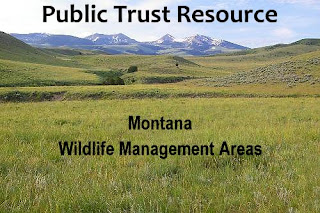Recently, Sen. John Brenden, on April 11th, 2013, during the SB 143
hearing before the House Agriculture Committee, compared
wild bison in Montana, to heathens, and domesticated bison to
Christians, "They are maintaining that bison from Yellowstone
National Park are wildlife. There's been bills and discussions
put in, that once they are in captivity, they become domesticated,
or they're livestock. If I knew the exact transition, the moment
that you go from being a heathen into a Christian, I don't know
that answer. It's a very difficult one."
This statement has larger ramifications than just the speciesism against wild bison in Montana; this is racism, against the Native American tribes, whose culture is intertwined with the bison. Brenden did not make an association of value between wild and domesticated bison, but made a moral association, which does not apply to animals, but to people.
The Native Americans across the U.S., as well as indigenous peoples across the world, have often been subjected to forced conversions to Christianity, or another dominant religion, in the guise of "civilizing" or "domesticating" them. This arrogant perspective that one belief system is superior and needs to be imposed on another is deplorable. The very term "heathen", from Old English hæðen, means "not Christian or Jewish". Perhaps this was a "Freudian Slip", revealing his views of Native Americans being herded onto reservations to be "domesticated" and often converted to Christianity, as being superior to those Native Americans that desire to uphold an older spiritual culture that views bison as kin.
In Lame Deer, Seeker of Visions, by Richard Erdoes and John Fire Lame Deer, Lame Deer states, "It is the same with the buffalo. They have the power and the wisdom. We Sioux have a close relationship with the buffalo. He is our brother. We have many legends of buffalo changing themselves into men. And the Indians are built like the buffalo, too-big shoulders, narrow hips. According to our belief, the Buffalo Woman who brought us the peace pipe, which is at the center of our religion, was a beautiful maiden, and after she taught our tribes how to worship with the pipe, she changed herself into a white buffalo calf. So the buffalo is very sacred to us. You cant understand about nature, about the feelings we have toward it, unless you understand how close we are to the buffalo. That animal was almost like a part of ourselves, part of our souls.
The
buffalo gave us everything we needed. Without it we were nothing.
Our tipis were made of his skin. His hide was our bed, our
blanket, our winter coat. It was our drum, throbbing through
the night, alive, holy. Out of his skin we made our water
bags. His flesh strengthened us, became flesh of our flesh.
Not the smallest part of it was wasted. His stomach, a red-hot
stone dropped into it, became our soup kettle. His horns were
our spoons, the bones our knives, our women's awls and needles.
Out of his sinews we made our bowstrings and thread. His ribs
were fashioned into sleds for our children, his hoofs became
rattles. His mighty skull, with the pipe leaning against it,
was our sacred altar. The name of the greatest of all Sioux
was Tatanka Iyotake--Sitting Bull. When you killed off the
buffalo you also killed the Indian--the real, natural, 'wild'
Indian."
Now, that is not Christianity. That is what Sen. John Brenden would say was "heathen" - juxtaposed to Christianity. And this interconnectedness is not isolated to just the Lakota nation. While not having researched the other Montanan nations yet, I have heard a number of other Nations speak of the Bison, as related and sacred. An example of this was evident at the Montana Bison Rally, at the Helena Capitol, on March 12th, 2013. This video clip was made by the Buffalo Field Campaign. As soon as I can edit the full version of Sen. Sharon Stewart-Peregoy's speech, I will put it up. She spoke very clearly on the importance of the bison to the Native American nations in Montana.
This comment of Brenden's needs to be challenged and publicly called into question. He needs to be held accountable. Racism and lack of tolerance for other's spiritual practices has no place in a "civilized" society, certainly not in our legislature.
This comment of Brenden's needs to be challenged and publicly called into question. He needs to be held accountable. Racism and lack of tolerance for other's spiritual practices has no place in a "civilized" society, certainly not in our legislature.
Kathryn QannaYahu




